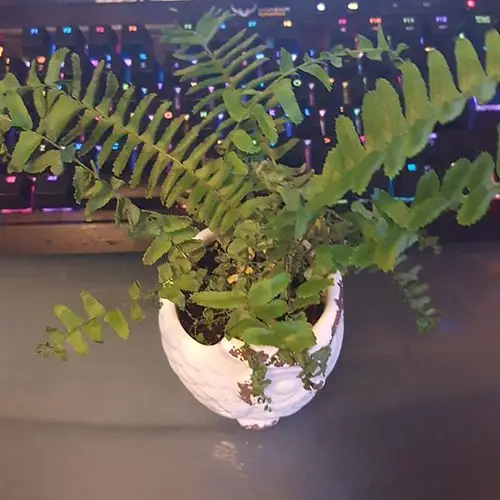Tips for Keeping Your Indoor Boston Fern Healthy While You’re Away
Whether you’re a globetrotter, a frequent business traveler, or just someone who occasionally needs a break, leaving home for an extended period can be a considerable concern for home gardeners. Among the many aspects of your home life that will become a point of worry, one often overlooked is the well-being of your indoor plants. Boston ferns, known for their elegant fronds and air-purifying qualities, are popular choices for home interiors. But how do you keep them flourishing while you’re absent? Below, we share valuable insights and tips to help you ensure your Boston fern remains vibrant and healthy, even when you can’t tend to it daily.

Introduction
For many of us, our plants are more than just decorations; they’re living companions, symbolic of the life, peace, and growth we aim to foster in our homes. But the unfortunate fact is, life happens, and travel is a part of it. The trick to ensuring your green companions don’t fall by the wayside in your absence is knowing how to set them up for self-sufficiency.
When it comes to caring for Boston ferns—native to the humid forests of the Americas—each detail, from water droplet to the quality of light, can affect their health profoundly. These ferns are far from set-it-and-forget-it types; they require a bit of finesse, even when you’re there to tend them. But don’t fret. We’ve gathered the best advice from gardening experts to prepare you for giving your Boston fern excellent care before you leave and setting up a maintenance routine that will sustain it in your absence.
Tip 1: Proper Watering Techniques
`Understand Your Fern’s Thirst`
Boston ferns hail from regions where rainfall is plentiful, so they’re quite particular about moisture in the air and soil. Yet, during short intervals of non-attendance, say, a week or so, overwatering poses a more immediate threat than under watering. Dr. Gina Green from GreenThumb University stresses, “Remember, it’s better to underwater than overwater.”
`Set The Water Schedule`
Ensuring the fern’s potting mixture stays consistently damp, but not sodden, is key. A thorough watering just before you leave will suffice for about a week. More than that, and you risk root rot. Alternatively, consider using self-watering systems or employing the services of a plant-savvy neighbor to check and water the fern as needed.
Tip 2: Adequate Lighting
`The Sun’s Vital Role`
Sunlight is to plants as exercise is to us—an essential aspect of health. However, direct sunlight can be harsh, potentially scorching your fern’s delicate leaves. Alex Johnson, Indoor Plant Specialist, advises, “Ensure your fern receives enough indirect sunlight, even when you’re not home.”
`Adjust for Absence`
Positioning the fern near a lightly-draped window is ideal. If direct light is scarce, use timers to switch on nearby lamps with full-spectrum bulbs. They won’t fully replace the sun, but they can supplement precious lumens during the daytime hours.
Tip 3: Humidity Control
`A Foggy Notion`
The air’s ambient moisture is integral to fern happiness, and the typically drier air of our homes is as dissatisfying to them as it would be to a desert traveler. Sam Lee, a Horticulturist at Urban Oasis Nursery, recommends creating a mini-humid environment with solutions like a pebble tray or an automatic room humidifier.
`Ready for Departure`
Before leaving, amp up the moisture levels with a quick misting and then enclose the fern in plastic—ideally in a room with controlled humidity if you have that option. The plastic will maintain a consistent microclimate. Be sure to consult with a plant expert, however, as some ferns do not tolerate enclosed spaces well.
Tip 4: Temperature Considerations
`Fern-Friendly Temperatures`
In general, keeping your home in the temperature bracket of 65-75°F is comfortable for a Boston fern. When vacating, don’t turn off the heating or cooling system altogether in an effort to save energy. This can expose your plants to temperature extremes. Chris Patel, a Plant Care Consultant, says, “Ferns thrive in moderately warm environments, so ensure your thermostat is set right.”
`Smart Climate Control`
If possible, invest in smart home devices that you can control remotely, ensuring the temperature remains within the safe zone for your plants. If this isn’t an option, consider keeping a fan on a low setting to maintain air circulation and prevent stagnancy, which can lead to fungal issues.
Tip 5: Pruning and Maintenance
`Promote Growth with Pruning`
Pruning is not only a cosmetic benefit, but it also encourages your fern to send resources where it needs them most. Maria Rodriguez, Owner of The Potted Plant, emphasizes that “trimming off any brown or yellowing fronds is essential. It’s a bit like taking your fern for a haircut; it feels good after!”
`Safeguard Leaf Vulnerability`
Boston ferns have a reputation for being somewhat high maintenance, specifically due to their sensitivity to stagnant air and dust on the fronds. Maria advises spraying the fronds with water and gently wiping them down to maintain the plant’s ability to breathe efficiently.
Conclusion
In the end, the best care for any living thing, plant or otherwise, is a bit of planning and setting the stage for success. By following the tips above, you can enjoy your time away from home with peace of mind that your Boston fern is being looked after, even as you explore the world or take a much-needed break. Remember, preparation is key, and investing in a thriving, verdant home environment is an investment in your well-being. Happy trails—and happy ferns!







